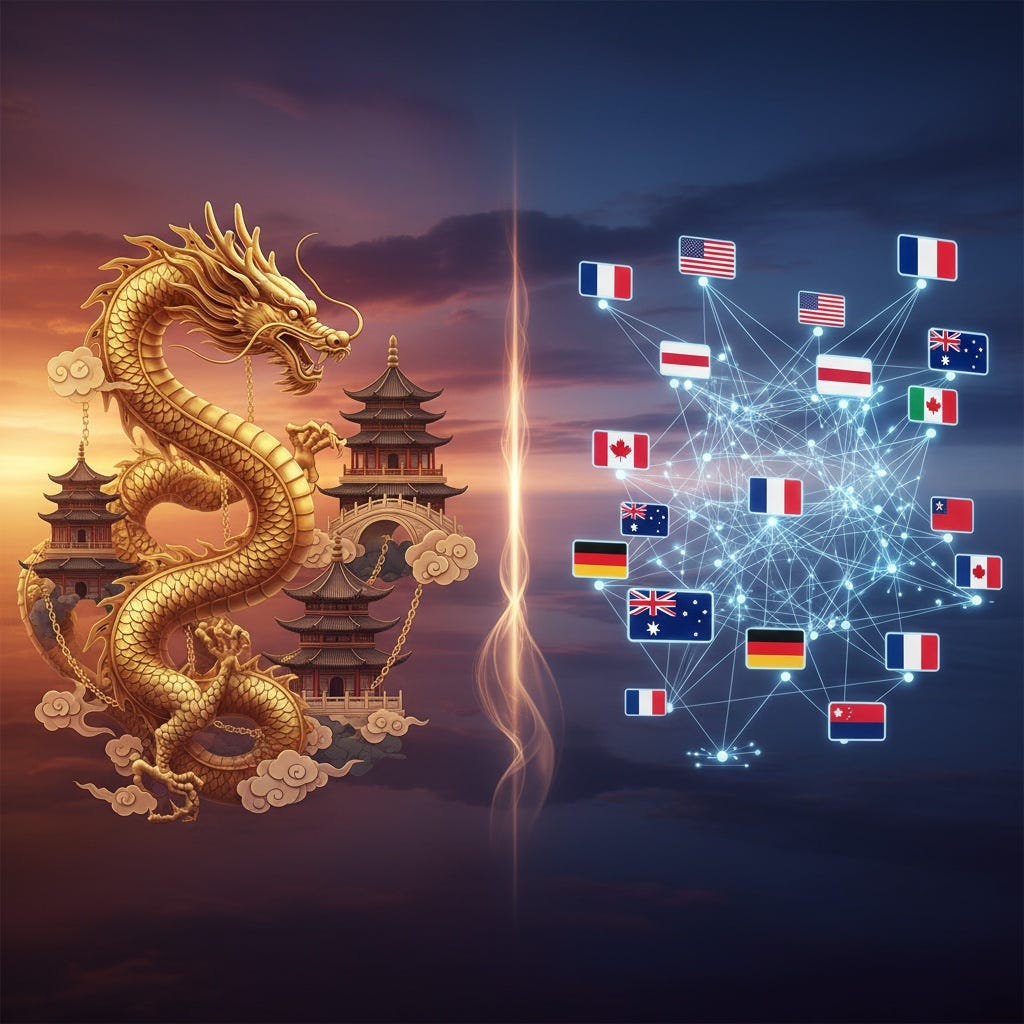Economic systems operate based on the cultures in which they exist. Western economies and America in particular treat progress as competition. In societies with a Confucian cultural perspective, such as China and Singapore, economic growth is designed to maintain social order and stability. Development is not viewed as competition but as a collective effort to strengthen the community and prevent disruption. The Confucian perspective is coordination, a shared effort to improve the nation rather than reward the individual.
Stability as a Strategy
Countries operating under the Confucian perspective use economic planning to reduce uncertainty and create stability.
In China, the five-year plan organizes national priorities, aligning government, business, and society in a unified direction. Singapore’s state-led development model does the same through long-term housing, education, and industrial policies.
These strategies are more than administrative tools. They reflect the cultural perspective that predictability sustains trust in the government. When people know the system will remain stable, they invest, work, and cooperate. In this logic, stability produces prosperity, not the other way around.
The Cultural Logic of Governance
Confucian Pragmatism aligns with several cultural dimensions:
Hofstede – Long-Term Orientation and Collectivism: Future security and group harmony take precedence over short-term gain. Economic decisions are expected to serve the community, not individual ambition.
Trompenaars – Particularism: Rules can be adapted when social balance requires it. Practical outcomes are valued over rigid adherence to principle.
Hall – High-Context Communication: Policy goals are communicated through shared understanding and implicit coordination rather than public confrontation.
Schwartz – Hierarchy and Harmony: Authority provides structure, and cooperation maintains cohesion. Respect for order allows planning to work efficiently.
In these systems, legitimacy depends on competence. Citizens expect leaders to demonstrate foresight and reliability more than personal charisma or ideological purity.
Leadership and Cultural Alignment
This model reflects Hornby’s North (Power-Seeker) and Blue (Guardian) archetypes, leadership that protects structure and enforces rules, combined with East (Communicator) traits that preserve consensus.
Lee Kuan Yew, previously in Singapore and Xi Jinping in China both operate within this alignment. Their leadership emphasizes planning, discipline, and performance as the basis of national trust.
Balancing Control and Innovation
The same structure that enables growth can also restrict it.
China faces tension between centralized control and the need for entrepreneurial flexibility. The government encourages innovation but within clearly defined boundaries.
Singapore manages a similar balance by permitting limited pluralism and controlled competition. Both models rely on careful calibration, enough freedom to advance, but not enough to destabilize the system.
Why It Matters
Confucian Pragmatism challenges the assumption that free markets alone produce prosperity. It shows that societies can achieve consistent development when policy aligns with cultural expectations of stability, hierarchy, and moral duty.
In this framework, trust replaces risk as the engine of growth. The economy is not a contest of individuals but a coordinated system designed to protect social balance.
The central question in Confucian economies is not “How fast can we grow?”
It is “How long can we remain stable while growing?”
Join us for more cultural perspective on TikTok and YouTube





